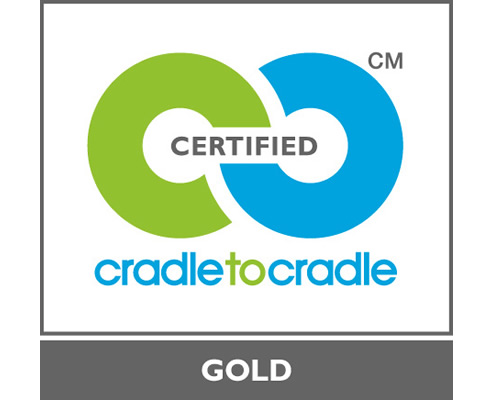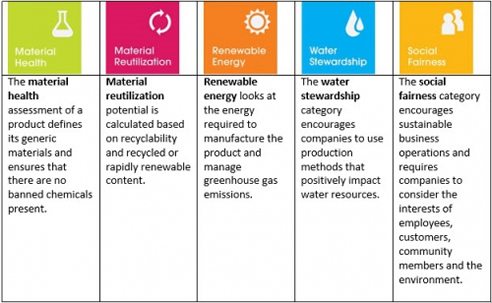Roller Blind Fabric Cradle to Cradle Certified GOLD from SOLIS

What is - Cradle to Cradle Certified™ Gold - Roller Blind Fabrics by SOLIS
REVOLUTION® is the first sunscreen fabric for roller blinds in the world to be Cradle to Cradle Certified™ Gold and made from plants, and meets the same performance standards as the conventional sunscreen fabrics. It is very dimensionally stable and durable, light fast comparable to PE5, and matches all polyester performance standards.
The Cradle to Cradle Certified™ Product Standard guides designers and manufacturers through a continual improvement process that looks at a product through five quality categories - material health, material reutilisation, renewable energy and carbon management, water stewardship, and social fairness. A product receives an achievement level in each category - Basic, Bronze, Silver, Gold, or Platinum - with the lowest achievement level representing the products overall mark.


Product assessments are performed by a qualified independent organisation trained by the Institute. Assessment Summary Reports are reviewed by the Institute, which certifies products meeting the Standard requirements, and licenses the use of the Cradle to Cradle Certified™ word and design marks to the product manufacturer. Every two years, manufacturers must demonstrate good faith efforts to improve their products in order to have their products recertified.
Be Revolutionary, Be Green and specify this fabric on your next Commercial Project.
- Material health, which involves identifying the chemical composition of the materials that make up the product. Particularly hazardous materials (e.g. heavy metals, pigments, halogen compounds etc.) have to be reported whatever the concentration, and other materials reported where they exceed 100 ppm. For wood, the forest source is required. The risk for each material is assessed against criteria and eventually ranked on a scale with green being materials of low risk, yellow being those with moderate risk but are acceptable to continue to use, and red for materials that have high risk and need to be phased out. Grey for materials with incomplete data. The method uses the term 'risk' in the sense of hazard (as opposed to consequence and likelihood).
- Material reutilization, which is about recovery and recycling at the end of product life.
- Assessment of energy required for production, which for the highest level of certification needs to be based on at least 50% renewable energy for all parts and subassemblies.
- Water, particularly usage and discharge quality.
- Social responsibility, which assesses fair labour practices.

|






 Motorised Roller Blinds for Auditoriums
Motorised Roller Blinds for Auditoriums Laser Blocking Roller Blinds by Solis
Laser Blocking Roller Blinds by Solis Plantation Shutters for Doors by Solis
Plantation Shutters for Doors by Solis Benefits of Linen Curtains by Solis
Benefits of Linen Curtains by Solis Custom Printed Blinds by Solis
Custom Printed Blinds by Solis Roller Blinds for Bathrooms by Solis
Roller Blinds for Bathrooms by Solis External Awnings for Restaurants by
External Awnings for Restaurants by Sheer Curtains for Office Fitouts by
Sheer Curtains for Office Fitouts by Bamboo Roman Blinds for Poolside Cabana
Bamboo Roman Blinds for Poolside Cabana Plantation Shutters for Bathrooms by
Plantation Shutters for Bathrooms by Benefits of Sheer Curtains by Solis
Benefits of Sheer Curtains by Solis Venetian Blinds for Bathrooms by Solis
Venetian Blinds for Bathrooms by Solis Noise Reducing Fabrics by Solis
Noise Reducing Fabrics by Solis Curtains for Curved Bay Windows by Solis
Curtains for Curved Bay Windows by Solis Automatic Folding Arm Awning by Solis
Automatic Folding Arm Awning by Solis Blockout Curtains for Hotels by Solis
Blockout Curtains for Hotels by Solis Curtain Room Divider by Solis
Curtain Room Divider by Solis Over Roof Conservatory Awning by Solis
Over Roof Conservatory Awning by Solis High Ceiling Sheer Curtains from Solis
High Ceiling Sheer Curtains from Solis Curtains for Boutique Changing Rooms by
Curtains for Boutique Changing Rooms by
